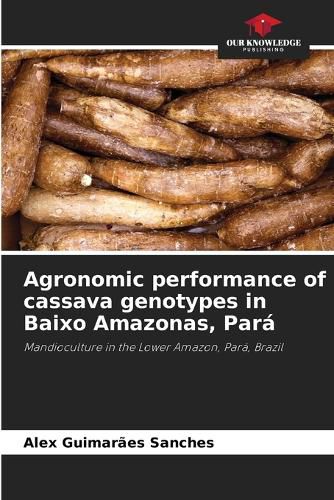Readings Newsletter
Become a Readings Member to make your shopping experience even easier.
Sign in or sign up for free!
You’re not far away from qualifying for FREE standard shipping within Australia
You’ve qualified for FREE standard shipping within Australia
The cart is loading…






Cassava (Manihot sculenta Crantz) belongs to the euphorbiaceae family and its cultivation is classified as temporary. Its root, rich in starch, is the part that is actually used, both for human food and animal feed and, increasingly, as an input in different productive sectors. In some regions, the leaves are also used for human or animal feed (in the latter case, as a cheap way of adding protein to rations). The work was carried out in partnership with the Para State Technological School (ETEPA), located in the Lower Amazon region in the municipality of Monte Alegre, Para. The economic development of this region is essentially sustained by family farming, with cassava being the main source of income and subsistence. It is hoped that the characterisation of the cassava genotypes elucidated here can make a significant contribution to improving the system for growing the crop in the ecosystem in question, resulting in a better quality product for the consumer and improved income and quality of life for rural producers.
$9.00 standard shipping within Australia
FREE standard shipping within Australia for orders over $100.00
Express & International shipping calculated at checkout
Cassava (Manihot sculenta Crantz) belongs to the euphorbiaceae family and its cultivation is classified as temporary. Its root, rich in starch, is the part that is actually used, both for human food and animal feed and, increasingly, as an input in different productive sectors. In some regions, the leaves are also used for human or animal feed (in the latter case, as a cheap way of adding protein to rations). The work was carried out in partnership with the Para State Technological School (ETEPA), located in the Lower Amazon region in the municipality of Monte Alegre, Para. The economic development of this region is essentially sustained by family farming, with cassava being the main source of income and subsistence. It is hoped that the characterisation of the cassava genotypes elucidated here can make a significant contribution to improving the system for growing the crop in the ecosystem in question, resulting in a better quality product for the consumer and improved income and quality of life for rural producers.